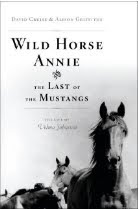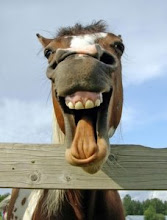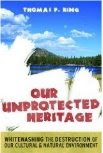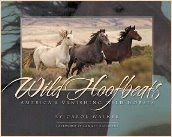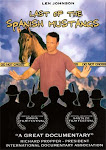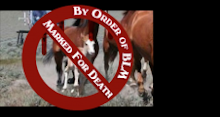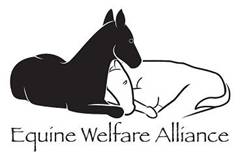What you do speaks so loud that I cannot hear what you say ~
Ralph Waldo Emerson
This is the "signature quote" added to every communication from the International Society for the Protection of Mustangs and Burros (ISPMB) located in Lantry, SD. The following is a summary of a recent press release sent out by ISPMB and is offered here to raise awareness and help for these historic horses needing your support.
-Three hundred wild horses that roamed wild and free on the Cheyenne River Reservation for six years will be removed by the Tribe on September 10th and returned to ISPMB under stipulations of an agreement between CRST and ISPMB.
The Tribe was given 82 wild horses in November 2001 to help develop their Tribal Tourism Park in hopes to stimulate their economy. The offspring of the horses were to be provided to the Lakota youth offering much needed activities for children on the reservation. No progress has been made toward achieving those goals," say ISPMB's president, Karen Sussman.
"The horses came to our people in a spiritual way and we had ceremonies welcoming the return of the wild horses. We sang songs that had not been sung in over 100 years. This is a sad day to see the horses removed," say Arvol Looking Horse - Keeper of the Sacred Buffalo Calf Pipe and Tribalmember.
Now facing the possible loss of the VE Ranch by the Tribe where over 800 wild buffalo once roamed along with the 300 wild horses, the Tribe has opened the nearly 22,000 acre ranch to cattle grazing. With less than 30 days to find a refuge for the horses, ISPMB is putting out a call for help. The organization was hit hard during this past year in finding and supplying hay to its three herds that it manages on the reservation.
"Located in the epicenter of the drought in our nation, there literally was no hay production within 100 miles of our ranch," say Sussman."We expended a lot of money on hay and now to save these 300 horses, we will need more hay."The organization plans to adopt out 150 or more of the young animals from one to three years of age and find temporary headquarters for the older animals until they can be returned to the wild. The mares will all receive birth control until a permanent location can be found.
The return of the horses to ISPMB comes at a very difficult time. Last year, ISPMB and its three herds survived the worst drought in the history of our state. The past year created a financial hardship for ISPMB. Because these are "Annie's horses," and following our mission to protect wildhorses, ISPMB is committed to saving these horses. We hope you can help us raise the $50,000 needed to save "Annie's" horses.
According to Sussman, the wild horses ISPMB will receive have great cultural and historic value as they are the ancestors of the first wild horses protected in the United States in 1952 in the Virginia Range in Storey County, Nevada by ISPMB's first president, Velma Johnston, affectionately known as "Wild Horse Annie." Ms. Johnston and ISPMB were responsible for the passage of the 1971 federal law that protects wild horses and burros for future generations to enjoy.
Today only 23,000 wild horses roam on public lands. More wild horses now are in captivity then exist on public lands. The numbers have dropped to 2/3 fewer wild horses than in 1971 when they were nearly eradicated. Areas where the wild horses and burros could be found were 303 sites in ten western states. Now there are only 198 sites left.
HISTORY OF THE VIRGINIA RANGE HORSES:
These horses are from the area near Virginia City, Nevada where Wild Horse Annie's ranch was once located and are often referred to as "Annie's Horses." They were the first wild horses to be protected when Annie was able to push through the 1952 Storey County law that prohibited the poisoning of water holes and the use of aircraft to capture wild horses. Ironically, when the 1971 federal law passed to protect wild horses and burros, these horses were not protected because they were not on federal land.
Today, the horses' current range is being threatened by the continual expansion of homes decreasing their habitat area.
ISPMB must raise $50,000 for hay and veterinary expenses to save the Virginie Range Horses.
PHOTOS AVAILABLE ON REQUEST
HOW YOU CAN HELP:
* Sponsor the Virginia Range Herd ($5,000) -
Receive a certificate ofthe herd and its history, a beautiful 8x10 photograph and a once in a lifetime three-day vacation at our wild horse ranch viewing, photographing, and interacting with the herd. Your name will be inscribed on our donor wall as a founding member of our International Wild Horse and Burro Heritage Center.
* Donations of $25 or more - receive a certificate with a photo of the herd -
"I Helped Save the Virginia Range Wild Horses"*
*Spread the word and ask your friends and family to participate.
*Actually adopt a horse from the herd. Horses will go to qualified adopters.
*Create fundraisers in your area to help us.
FOR SOUTH DAKOTA RESIDENTS:
* Donations of hay are needed.
* Temporary locations are needed to house 10 to 20 horses.
* Permanent homes needed for the younger animals to qualifiedadopters.
* Volunteer help to haul horses and care for animals.
* Land needed to temporarily house 100 horses.
Contact:
Karen A. Sussman
President, ISPMB
PO Box 55
Lantry, SD 57636-0055
Tel: 605.964.6866
Cell: 605.430.2088
Saving America's Wild Horses and Burros since 1960
Become a member of ISPMB today!



